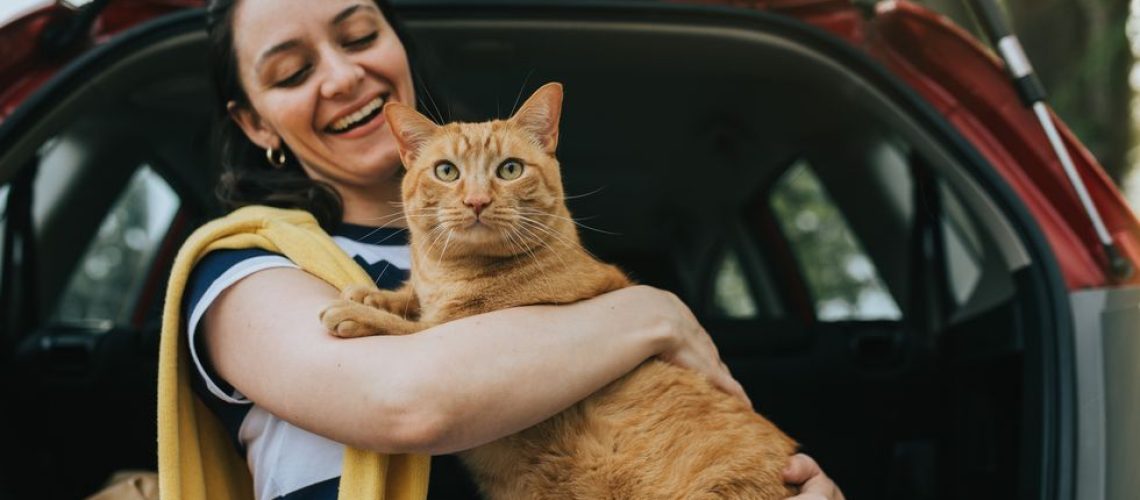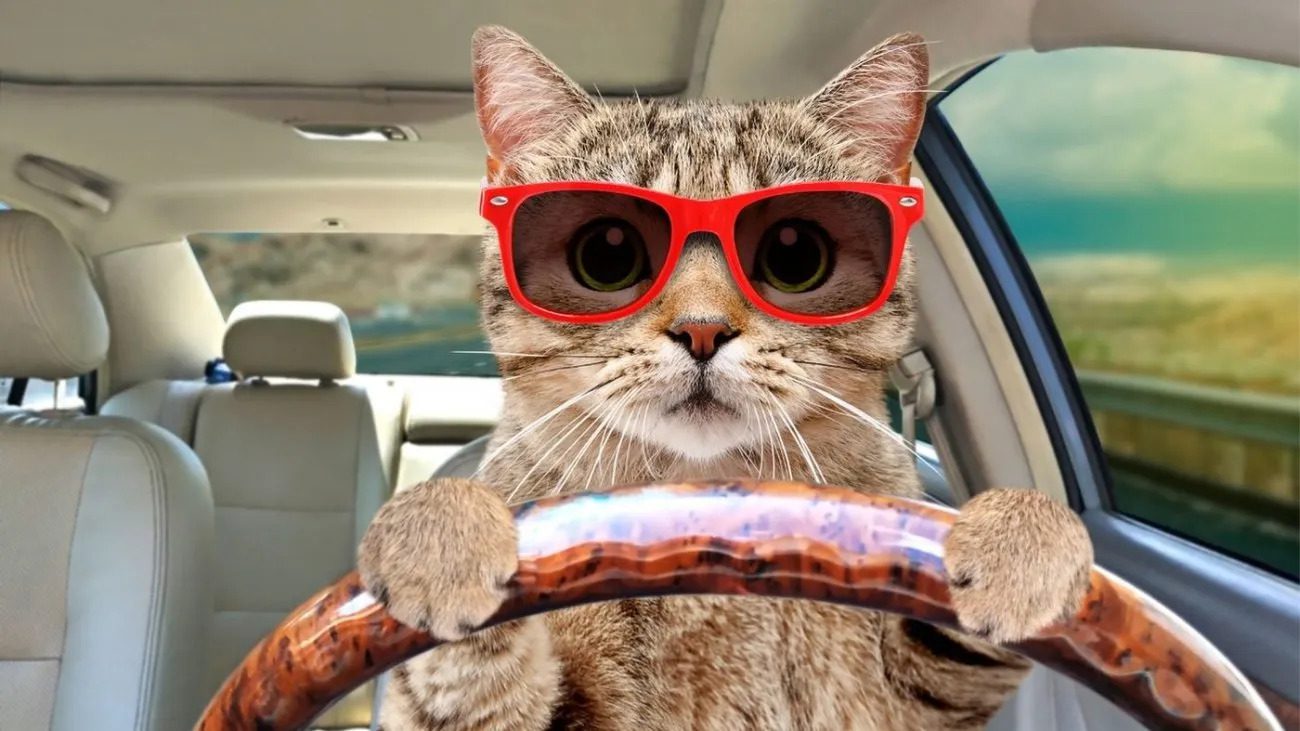Discover the importance of helping cats enjoy car travel for their well-being. Reduce stress, make vet visits easier, and strengthen your bond with your furry friend.
Key Takeaways:
1. Gradually acclimate your cat to car travel by starting with short trips and gradually increasing the duration.
2. Use a secure and comfortable carrier for your cat to ensure their safety and reduce anxiety during car travel.
3. Familiarize your cat with their carrier by leaving it open at home and placing treats or toys inside to create positive associations.
4. Keep the car environment calm and quiet by minimizing loud noises and avoiding sudden movements that may startle your cat.
5. Prioritize frequent breaks during long journeys to allow your cat to stretch, use the litter box, and have some time outside of the carrier in a safe area.
Importance of Helping Cats Enjoy Car Travel
Traveling with cats can be a challenging experience, but it is important to help them enjoy car travel for their well-being. Cats are creatures of habit and can become stressed or anxious when taken out of their familiar environment. If a cat associates car travel with fear or discomfort, it can lead to negative effects on their physical and mental health.
Helping your cat feel comfortable during car travel is crucial for several reasons. First, it reduces stress and anxiety, which can have a positive impact on their overall health. Second, it makes future trips to the vet or other necessary outings less traumatic for both you and your cat. Lastly, if you enjoy traveling and want to take your cat along, helping them enjoy car travel will make the experience more enjoyable for everyone involved.
The Physical and Mental Effects of Stressful Car Travel on Cats
Stressful car travel can have various physical and mental effects on cats. Some common signs of stress in cats include excessive meowing or vocalization, panting, drooling, pacing or restlessness, hiding behavior, vomiting or diarrhea, and decreased appetite. These symptoms not only indicate that your cat is uncomfortable but can also lead to more serious health issues if left unaddressed.
Mentally, stressful car travel can cause anxiety and fear in cats. This fear response may generalize to other situations outside the car as well. It can result in behavioral problems such as aggression or litter box issues when the cat feels threatened or insecure.
The Benefits of Helping Your Cat Enjoy Car Travel
- Reduced stress and anxiety levels
- Easier vet visits and necessary outings
- Enhanced bond between you and your cat
- Ability to travel with your cat and share new experiences
By taking the time to help your cat enjoy car travel, you can alleviate their stress and anxiety, making future trips easier for both of you. It also strengthens the bond between you and your cat as they learn to trust that you will provide a safe and comfortable environment during car rides. Additionally, if you enjoy traveling or need to take your cat on trips, helping them enjoy car travel opens up opportunities for shared experiences and adventures together.
Common Reasons Why Cats Dislike Traveling in Cars
Many cats have a natural aversion to car travel due to a variety of reasons. One common reason is motion sickness, which can cause nausea and discomfort for the cat. Another reason is the unfamiliarity and unpredictability of car rides, which can be stressful for cats who thrive on routine and familiarity. Additionally, the noise and vibrations of the car can be overwhelming for cats with sensitive hearing.
To address these issues, it's important to understand your cat's individual needs and preferences when it comes to traveling in cars. By identifying the specific reasons why your cat dislikes car rides, you can take steps to alleviate their anxiety and make the experience more enjoyable for them.
Tips to Help Cats Enjoy Car Travel: The First Step
The first step in helping your cat enjoy car travel is to create positive associations with being in the car. Start by gradually introducing your cat to short car rides that are associated with pleasant experiences, such as going to a favorite park or receiving treats. This will help your cat associate car rides with positive outcomes and reduce their anxiety.
Another important tip is to ensure that your cat feels secure and comfortable during car rides. Use a sturdy carrier that provides enough space for your cat to stand up, turn around, and lie down comfortably. Line the carrier with familiar bedding or clothing that smells like home to provide a sense of security.
Making the Car a Comfortable Place for Your Cat
To make the car a comfortable place for your cat, it's essential to create a calm environment. Reduce noise levels by playing soft music or using white noise machines. Consider covering the carrier with a lightweight blanket or towel to create a cozy den-like space that helps block out visual stimuli.
In addition, ensure that the temperature inside the car is comfortable for your cat. Avoid extreme heat or cold, and use sunshades or window covers to regulate the amount of sunlight entering the car. It's also crucial to provide proper ventilation by cracking open windows or using air conditioning.
Creating a Calm Environment:
- Play soft music or use white noise machines to reduce noise levels
- Cover the carrier with a lightweight blanket or towel
- Regulate temperature and sunlight entering the car
- Provide proper ventilation
The Right Carrier for Traveling with Your Cat in a Car
Choosing the right carrier for traveling with your cat in a car is crucial for their comfort and safety. Opt for a carrier that is well-ventilated and secure, with sturdy construction and reliable latches. The carrier should be large enough for your cat to move around comfortably but not too spacious that they can get tossed around during sudden stops or turns.
Consider using carriers that have top-loading options, as this can make it easier to place your cat inside without causing stress. Additionally, carriers with removable tops can allow you to interact with your cat during breaks without risking their escape.
Gradually Introducing Your Cat to Car Travel and Reducing Anxiety
To help reduce anxiety associated with car travel, it's important to gradually introduce your cat to this experience. Start by simply placing your cat in an open carrier inside the stationary car for short periods of time while providing treats or playtime. Gradually increase the duration of these sessions while ensuring positive experiences.
You can then progress to short drives around familiar areas before gradually extending the duration and distance of each trip. By taking small steps and providing positive reinforcement, you can help your cat become more comfortable with car travel and reduce their anxiety.
Entertaining Your Cat During Car Rides: Recommended Ways
Keeping your cat entertained during car rides can help distract them from any anxiety or discomfort they may be experiencing. Consider bringing along their favorite toys or interactive puzzles that can keep them engaged. Additionally, playing calming music specifically designed for cats can help create a soothing environment.
If your cat enjoys looking out the window, consider using window perches or suction cup beds that provide a safe vantage point. However, always ensure that your cat is securely restrained in their carrier to prevent any accidents or injuries.
Necessary Breaks and Care for Cats during Long Car Trips
During long car trips, it's essential to provide necessary breaks and care for your cat to ensure their well-being. Plan regular stops every few hours to allow your cat to stretch their legs, use the litter box if needed, and have access to fresh water and food. Use a harness and leash to safely walk your cat outside the car while keeping them secure.
When stopping for breaks, never leave your cat unattended in the car as temperatures can quickly rise or fall to dangerous levels. Always prioritize their safety and comfort by ensuring they are properly secured inside the vehicle or in a designated pet-friendly area.
Safety Precautions When Traveling with a Cat in a Car
Ensuring the safety of your cat during car travel is of utmost importance. Always secure your cat inside a carrier that is properly fastened with seat belts or other restraints designed for pet travel. This will prevent them from being thrown around in case of sudden stops or accidents.
Avoid letting your cat roam freely inside the car, as this can be dangerous and distracting for the driver. Keep windows closed or only partially open to prevent your cat from escaping or getting injured. Additionally, never leave your cat alone in a parked car, as they can quickly become overheated or stressed.
Safety Precautions:
- Secure your cat inside a carrier with seat belts or restraints
- Avoid letting your cat roam freely inside the car
- Keep windows closed or partially open
- Never leave your cat alone in a parked car
| Conclusion | |
| Tips to Help Cats Enjoy Car Travel: |
|
How do I desensitize my cat to ride in the car?
To prepare your adult cat for a car trip, introduce the carrier to them a few days beforehand and make it an appealing space by placing treats or catnip inside. Using an anti-anxiety pheromone spray such as Feliway can also help cats view the carrier as a comfortable and familiar environment.
Can I give my cat Benadryl for a long car ride?
Veterinarians sometimes suggest using the mild sedative found in Benadryl to help calm anxiety in certain situations, such as car or airplane travel, especially for cats who may become anxious or upset. Benadryl can be an effective sedative for these situations.
How long can cats travel without peeing?
Attempting to get your cat to use the litter box before leaving is unlikely to be successful. However, there is no need to be concerned because cats are capable of holding their urine for up to 24 to 48 hours. It is important to note that accidents can occur, particularly if the cat is feeling anxious.
Why do cats cry in the car?
While you may want to bring your cat with you on vacation, cats are creatures of habit and may not adapt well to the change in routine and new environment. Some cats can become anxious in unfamiliar situations, such as being in a car, and may exhibit behaviors like loud meowing or experiencing sickness.
Are car rides too stressful for cats?
Motion sickness is a frequent issue among cats. While dogs can often be acclimated to car rides, it can be more difficult for cats to overcome their anxiety. The majority of motion sickness in cats is a result of the stress and anxiety they experience during travel.
Why do cats hate car rides so much?
Your cat's plans are disrupted by car rides. They prefer familiar surroundings and want immediate access to their desired things. When you're driving on the interstate, your cat cannot cuddle up in the windowsill and observe or pursue birds.

















